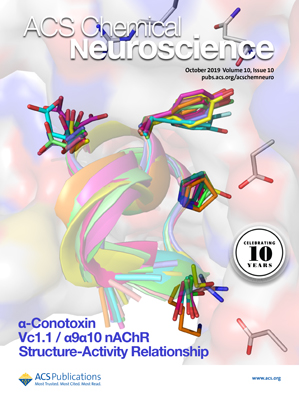迷幻剂、灵性和原教旨主义:认知灵活性和刚性的脑网络方法。
IF 3.9
3区 医学
Q2 BIOCHEMISTRY & MOLECULAR BIOLOGY
引用次数: 0
摘要
这种观点将神秘主义和原教旨主义重新定义为大脑网络疾病,迷幻药如裸盖菇素、麦角酸二乙胺和N,N-二甲基色胺提供了调节这些状态的潜力。通过破坏僵化的神经模式,致幻剂可能促进认知灵活性,挑战僵化的信仰体系,并为极端主义和精神健康障碍提供治疗价值。本文章由计算机程序翻译,如有差异,请以英文原文为准。
Psychedelics, Spirituality, and Fundamentalism: A Brain Network Approach to Cognitive Flexibility and Rigidity.
This viewpoint reconceptualizes mysticism and fundamentalism as brain network disorders, with psychedelics like psilocybin, lysergic acid diethylamide, and N,N-dimethyltryptamine offering potential to modulate these states. By disrupting rigid neural patterns, psychedelics may foster cognitive flexibility, challenge inflexible belief systems, and offer therapeutic value for extremism and mental health disorders.
求助全文
通过发布文献求助,成功后即可免费获取论文全文。
去求助
来源期刊

ACS Chemical Neuroscience
BIOCHEMISTRY & MOLECULAR BIOLOGY-CHEMISTRY, MEDICINAL
CiteScore
9.20
自引率
4.00%
发文量
323
审稿时长
1 months
期刊介绍:
ACS Chemical Neuroscience publishes high-quality research articles and reviews that showcase chemical, quantitative biological, biophysical and bioengineering approaches to the understanding of the nervous system and to the development of new treatments for neurological disorders. Research in the journal focuses on aspects of chemical neurobiology and bio-neurochemistry such as the following:
Neurotransmitters and receptors
Neuropharmaceuticals and therapeutics
Neural development—Plasticity, and degeneration
Chemical, physical, and computational methods in neuroscience
Neuronal diseases—basis, detection, and treatment
Mechanism of aging, learning, memory and behavior
Pain and sensory processing
Neurotoxins
Neuroscience-inspired bioengineering
Development of methods in chemical neurobiology
Neuroimaging agents and technologies
Animal models for central nervous system diseases
Behavioral research
 求助内容:
求助内容: 应助结果提醒方式:
应助结果提醒方式:


